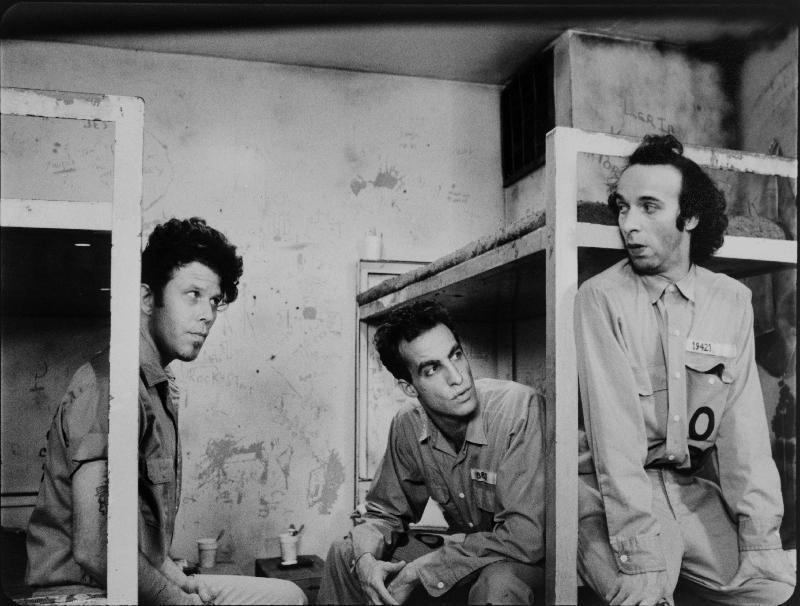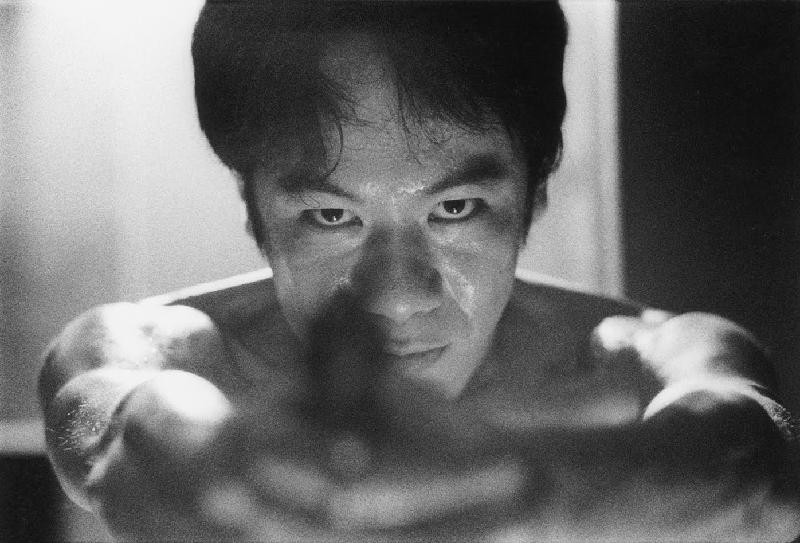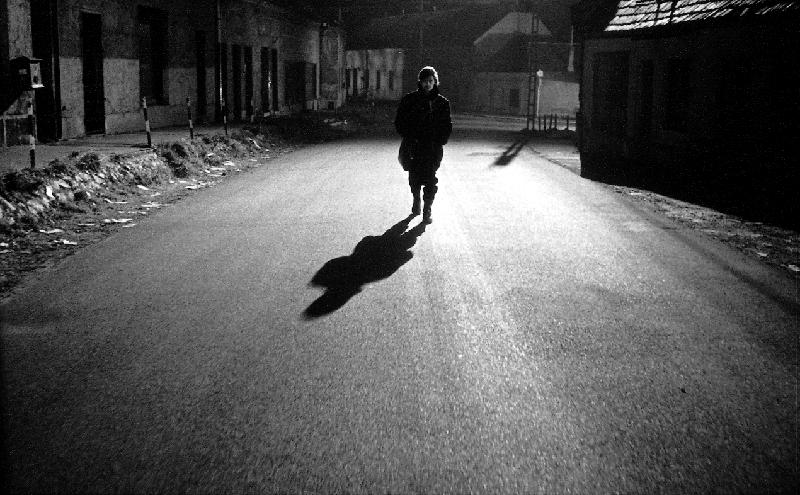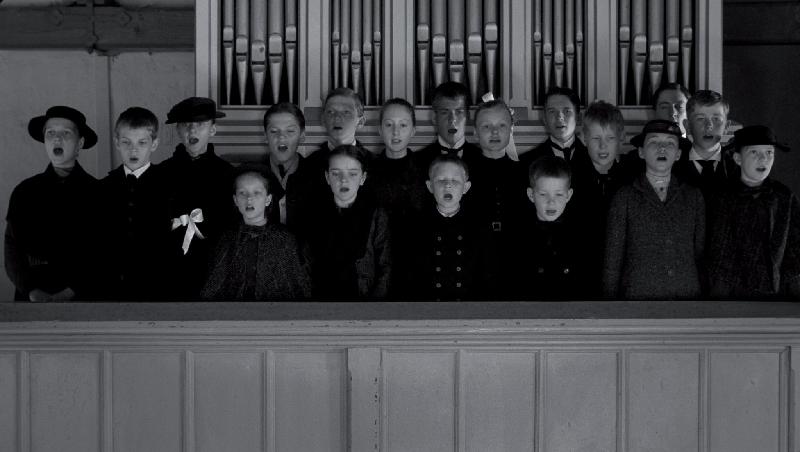Film Programmes Office to showcase wide range of aesthetics in black-and-white films (with photos)
******************************************************************************************
Peter Bogdanovich's "The Last Picture Show" (1971) is an iconic non-conformist work of its time, and also emblematic of American cinema's golden age that was in bloom in the 1970s. Set in a cinema in a small Texas town in the early 1950s, the realistic and poetic film tells a coming-of-age story of several teenagers. Hollywood veteran Robert Surtees' evocative cinematography animates the 1950s melancholic poignancy and connects with the 1970s atmosphere. The film won both Best Actor and Best Actress in a Supporting Role at the 1972 Academy Awards as well as Best Screenplay at the 1973 BAFTA Awards.
Despite being asked to shoot on colour stock, Mel Brooks insisted to film "Young Frankenstein" (1974) in monochrome for nostalgia reasons, paying tribute to the 1930s Universal Studio series of Frankenstein films. The film mixes genres like comedy, horror and science fiction. Gerald Hirschfeld's photography samples the visual expressionism of Universal's 1930s monster flicks, wedding it to the gothic romanticism of the 1818 original novel. The film won Best Horror Film and Best Director at the 1976 Saturn Awards.
"Killer of Sheep" (1977), made under Charles Burnett's direction, scripting, cinematography and editing, was shot on 16mm black-and-white "short ends" - the end-of-reel stock often discarded. The work not only shines a light of realism on the conditions of African American life, but also reacts to Hollywood dominance as well as blaxploitation flamboyance through returning filmmaking to the basics. Made as an ordinary student project, the film became a monument in the landscape of black American cinema after several years and was the winner of the FIPRESCI Prize at the Berlin International Film Festival 1981.
Directed by and starring Woody Allen, the romantic comedy "Manhattan" (1979) saw Allen collaborate with legendary cinematographer Gordon Willis to stage a memorable array of monochromic images in widescreen format, presenting New York in all its glory with the iconic cityscape including a museum, a bookstore and the Queensboro Bridge. The city plays an indispensable role in the story while the affairs among characters wander elegantly between witty humour and romance. The film won Best Film and Best Screenplay at the 1980 BAFTA Awards.
"Down by Law" (1986) was directed by Jim Jarmusch, a key member of the 1980s American indie renaissance who is fond of black and white. The film follows the two male leads, who are innocent but imprisoned, and their Italian cellmate, hatching a plan to escape. Jarmusch partnered with Dutch cinematographer Robby Müller, nicknamed the "Master of Light", who adds a touch of European class to the film. The film won Best Foreign Feature Film in the 1987 Norwegian Film Festival Amanda Award.
Cult bad boy Shinya Tsukamoto is a type of all-round director rarely seen in Japanese cinema. For "Bullet Ballet" (1998), he directed, wrote, acted, photographed and more to capture the story of a man who, after his girlfriend shoots herself, becomes obsessed with death and guns and runs into criminal underground warfare. The camera movements, compositions and editing rhythms give out strong visual impacts. The film won the Jury Grand Prize at the Sweden Fantastic Film Festival 1998 and Best New Talent at the Yokohama Film Festival 2001.
Co-directed by Béla Tarr and his wife Ágnes Hranitzky, "Werckmeister Harmonies" (2000) tells of a small town being thrown into turmoil by the arrival of a circus with its gigantic whale and a mysterious man, "The Prince". Tarr's art is marked by long takes, and this over two-hour-long story, filmed with seven cinematographers, is told in only 39 shots. The shot which shows a truck carrying the gigantic whale into the town has become a classic over time. The film won the Berliner Zeitung Readers' Jury prize at the Berlin International Film Festival 2001.
Jiang Wen's "Devils on the Doorstep" (2000) is a far cry from standard anti-Japanese aggression war films. Set in a small mountain village in Hebei, the film follows a villager who is told to take custody of two prisoners from the Japanese army, thus throwing the whole village into a ridiculous and uncontrollable situation that showcases national traits and humanity during wartime. Jiang's editing leaves audiences room for reflection while cinematographer Gu Changwei's photography animates the events with sharply cut images, soaked in various shades of evocative grey. The film won the Grand Jury Prize at the Cannes Film Festival 2000.
In Michael Haneke's "The White Ribbon" (2009), children in a remote village in Germany are required to wear white ribbons on their arms as punishment and a reminder after they have done something wrong. When a series of accidents breaks out in this tranquil village, the purity of humans is challenged. Cinematographer Christian Berger first shot the film in colour with a Super 35 camera, then removed the hues afterwards with digital technology, enriching the details in the images. The film won Best Foreign Language Film at the 2010 Golden Globes as well as the Palme d'Or and the FIPRESCI Prize at the Cannes Film Festival 2009.
Believing that the "best version of this movie is black and white", George Miller produced "Mad Max: Fury Road (Black & Chrome Edition)" (2015) after the release of the film's colour version. The film depicts a female rebel in a post-apocalyptic wasteland fighting against a tyrannical ruler and searching for her homeland. Under John Seale's cinematography, the original version already excelled in depicting a post-apocalyptic world. Taking on a different tone, the black-and-white approach portrays the horrific future with a striking new aesthetic, making the film an extraordinary action work in black-and-white cinema. The film won Best Film Editing and Best Costume Design at the 2016 Academy Awards.
Directed and scripted by Lav Diaz, a master in Filipino cinema, "The Woman Who Left" (2016) follows a woman who is released from 30 years' imprisonment for a crime she did not commit and schemes to take revenge. Diaz also photographed his film, and his signature long takes and chiaroscuro images of washed-out sunlight, backstreet shadows and urban fluorescence capture the forbidding reality and horrific textures of life conditions. The film won the Golden Lion award at the Venice Film Festival 2016.
"The Last Picture Show", "Young Frankenstein", "Killer of Sheep" and "The Woman Who Left" have Chinese subtitles; "Down by Law", "Bullet Ballet", "Werckmeister Harmonies" and "Devils on the Doorstep" have English subtitles; "The White Ribbon" has Chinese and English subtitles; and "Manhattan" and "Mad Max: Fury Road (Black & Chrome Edition)" are without subtitles. As "The Last Picture Show" is classified as Category III, only persons aged 18 and above will be admitted.
In addition, two workshops themed on photography will be held from October 5 to 7 at the Hong Kong Art School Main Campus of the Hong Kong Arts Centre and around Wan Chai. The workshop entitled "Photography Without Camera - Photogram" will enable participants to enjoy photo-taking with primitive photographic concepts, not digital devices, in an evening and the following morning. In the "Peep into the Community Materials - Pinhole Camera" workshop, participants can create their own pinhole cameras from materials collected from the community and gain darkroom experience. All workshops will be conducted in Cantonese.
Tickets for HKFA screenings are priced at $55, those for Hong Kong Arts Centre screenings are priced at $65 and $75, and workshop tickets are priced at $280 each. Tickets are now available at URBTIX (www.urbtix.hk). For credit card telephone bookings, please call 2111 5999. For programme enquiries, please call 2734 2900 or visit www.lcsd.gov.hk/fp/en_US/web/fpo/programmes/1970bnw/index.html.
Ends/Wednesday, July 25, 2018
Issued at HKT 19:36
Issued at HKT 19:36
NNNN








